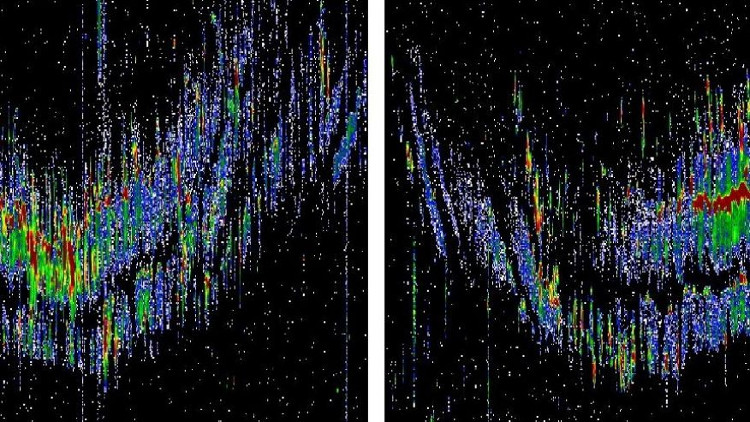The phenomenon of radio waves reverberating mysteriously from the sky has been answered after more than 50 years
After more than 50 years, scientists at Boston University have discovered the cause of radar signals being repelled from the Earth's top atmosphere. The culprits they identified were not UFOs but the Sun.
The story happened in 1962, after the Jicamarca radio observatory was built in Lima, Peru, the researchers immediately discovered the strange reverberation of the radio signal. transmitted from the observatory. They determine the agent that causes the signal to bounce off at a height of 130 to 160 km above sea level. Although other phenomena discovered by the observatory were explained only a few years later, radar radio waves echoed, causing headaches for the scientists.
To see what happened at a height determined to be between 130 and 160km, the researchers then launched missiles carrying antennas and detectors onto the suspect area. These devices were designed to receive radar waves but Oppenheim said "they found nothing".
Strangely, the echo of radio waves only occurs at daytime and disappears at night. The echo of radio waves may appear at dawn every day at an altitude of about 160km before falling to a height of 130 km and becoming stronger. Later in the afternoon, the waves began to appear and increase in the starting direction at an altitude of 160 km above sea level. On the chart, radio waves resemble the shape of a necklace.
In 2011, when a partial eclipse occurred, radio waves reverted to disappear. Oppenheim said: "After that solar eclipse, a solar storm and the signal bounced back very strongly."

The reverberation of radio waves only occurs during the day and disappears at night.
The culprit is the sun
After a lot of efforts to analyze with the power of supercomputers, Oppenheim and partner Yakov Dimant were able to simulate the phenomenon of radio waves bouncing back this singularity and finding the culprit is the sun.
Ultraviolet radiation from the sun seems to have hit the ionosphere (Earth's top atmosphere lies at an altitude of 80 to 600km above the sea level) where the radio wave signal is detected. . Subsequently, radiation in the form of photon particles separates the ionosphere molecules from their electrons and produces positively or ionly charged particles and free electrons. According to Oppenheim, the large charged electrons or photoelectron at this altitude are much colder than conventional photoelectrons.
By computer models, scientists gave high-energy electrons interaction with low-energy particles. Because high-energy electrons move through a cold and slow environment in the ionosphere, plasma dynamic disturbances occur and as a result electrons begin to vibrate with different wavelengths.
Oppenheim explains: "A set of high-energy electrons moves through a set of lower-energy particles, vibrations will occur, just as we pull on the violin strings. Gathering cold electrons more will start creating resonant waves ".
"The next step is that these electron waves also cause positively charged ions to form waves , " Oppenheim said. However, the wave formation of ions is still quite vague, Oppenheim explained that ion waves occur periodically and form clusters but no more dominant wavelengths. These wavelengths are strong enough to reflect the radio waves back to the ground and form waves.
Oppenheim said: "The reason why researchers have not been able to explain the cause of the waves over a long period of time is because of its complex formation mechanism."
And when asked why the rocket-carrying missiles were launched but could not detect the waves, Oppenheim said that the messy characteristics of the waves caused the devices to be useless.
- Discover mysterious radio waves 3 billion light years from Earth
- Mysterious waves of radio waves outside the universe
- Scientists have found the location of the largest beam of radio waves ever discovered in the universe
- Who invented radio?
- Giant telescope captures signals from the universe
- For the second time, science has found a source of mysterious radio waves
- Why do Americans still believe in the ability of radio waves to be more mobile?
- Mysterious radio signals from the universe
- What does the universe look like if you see radio waves?
- Telescope Australia detects more mysterious radio signals
- AI detects 72 radio signals from the universe
- Aliens are trying to send messages to Earth?
 'Fine laughs' - Scary and painful torture in ancient times
'Fine laughs' - Scary and painful torture in ancient times The sequence of numbers 142857 of the Egyptian pyramids is known as the strangest number in the world - Why?
The sequence of numbers 142857 of the Egyptian pyramids is known as the strangest number in the world - Why? History of the iron
History of the iron What is alum?
What is alum?